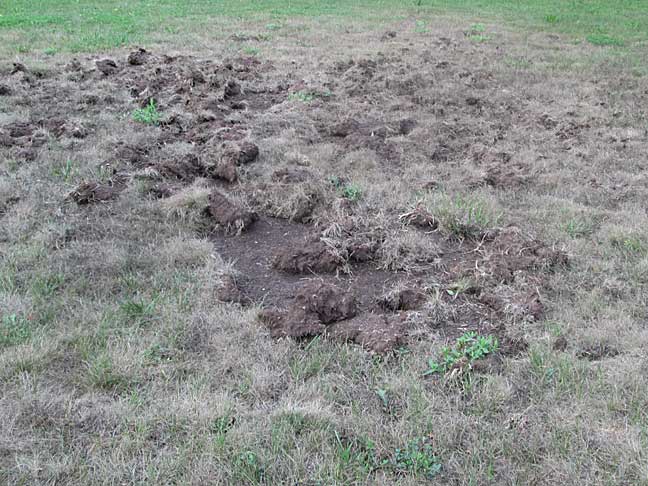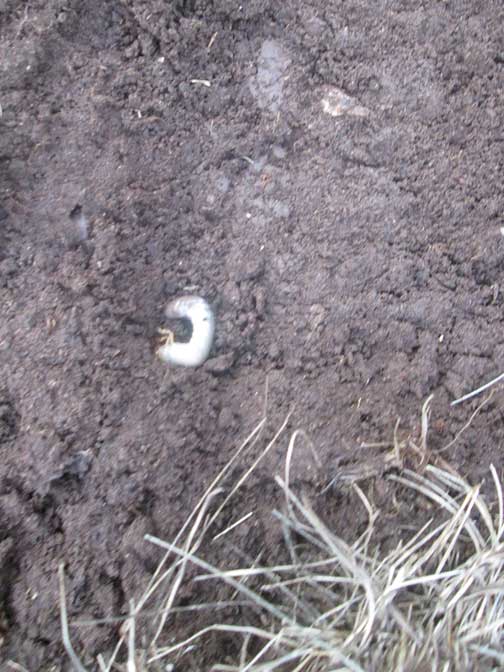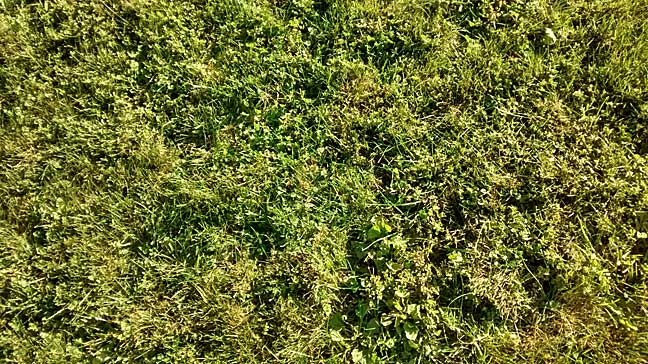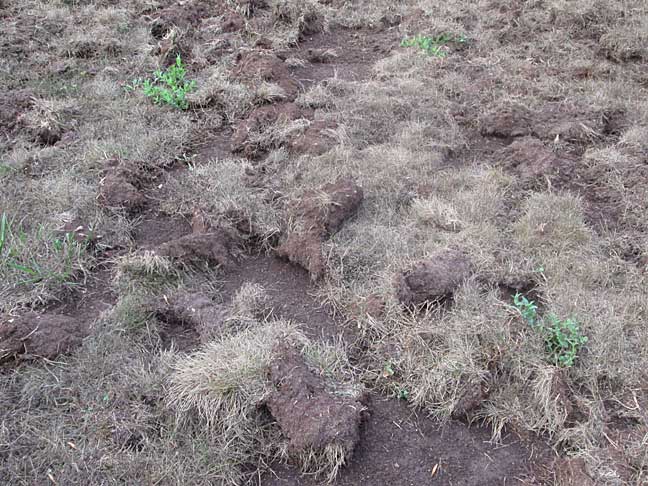Lions Tigers & Grubs, Oh My: Treating Lawn Grubs Naturally
Yes, it was nearly as bad as it sounds. Okay… no lions and tigers. But I may have preferred them. Certainly from a yeuuck perspective. You see last fall our lawn was looking absolutely terrible. And I am a not-at-all-picky organic gardener. Now I would be in the business of treating lawn grubs—naturally, without chemicals.
The first inkling of a problem appeared a few years earlier with patches of dry lawn. Now in Wisconsin it isn’t uncommon for lawns to go brown and dormant in late summer, but these patches seemed a bit different. And even watering didn’t perk them up so it didn’t look like regular dormancy. But I’m a not-at-all-picky organic gardener so I just let it slide.
Then it got worse.
So back to how picky I’m not. Dandelions, clover, ground ivy–okay I dislike them (especially the latter), but they don’t freak me out. But large completely brown patches with clumps of dead sod pulled up all over? Clearly. Not. Okay.
Off to the internet for some research.
The Problem
Lawn grubs, the pale larvae of various beetles (likely Japanese beetles for us), were living underground and chomping on our grass roots. A mild case of grubs can be weathered and may just show up as some brown patches (my problem in prior years). But in a serious infestation the grubs can eat away whole areas of roots, killing the grass above.
Then the crows come in (we were lucky they weren’t skunks) to dig up the larva for dinner making telltale circular holes. In the worst cases (ours), they fully uproot large areas of dead grass.
Definitive proof? Dig up a section of turf and count the grubs. A couple per square foot is normal; 10 or more is not. 6-9 is a gray area, probably tolerable for a healthy lawn (aka not ours).
Treating Lawn Grubs Naturally
Many sites were happy to rattle off the names of toxic chemicals that would do the trick. Toxic chemicals in an area of high bed rock and beautiful waterways? Within feet of the well my kids drink from? I don’t think so.
So I went with nematodes–microscopic worms, bought over the internet. You apply them to the infested areas, where they attack grubs, reproduce and continue to do battle. Nematodes (milky spore is another alternative I considered) must be applied in weather that is cool enough to keep them alive but warm enough to let them take action. Fortunately, we were in such a window.
I went low tech, mixing the nematodes with water in a large watering can, hand sprinkling them into the lawn, then repeating in the next section. A week later there was some evidence of dead grubs (along with some still alive) and we began the reseeding process with grub resistant seed.
Part of the treatment is also more attention to proper lawn mowing. Our lawn mower got moved to it’s highest setting to promote good root growth and we stopped relying on our teenagers for regular cutting. That’s right, Dad got back in the lawn mowing business!
Results of Treating Lawn Grubs Naturally
Our new grass is alive and well though still studded with the usual weeds (Yes, we should have dug up the weeds, which were unaffected by the grubs.)
Did the changes work or were conditions just different this year?
Answer—some of each. Things looked better all over the lawn this year–even in the areas we didn’t touch. So I know that having a drier late summer was a positive for the lawn (counterintuitively–but grubs like it moist). We still have (untreated) areas where the turf is pulling up accompanied by marauding crows. But the fact that the treated areas stayed completely good tells me it is likely that the treatment contributed.
What helped more, the new seed, proper mowing or the nematodes? If I were a good scientist rather than a desperate homeowner, I would have tried each of these independently on different areas. Alas…
Treating lawn grubs naturally, without chemicals is clearly possible. Better yet is avoidance– in the future we will mow properly and pay more attention to to catch problems early. Even if I still am a not-so-picky organic gardener.
For more information, see U of Illinois or Organic Land Care.





